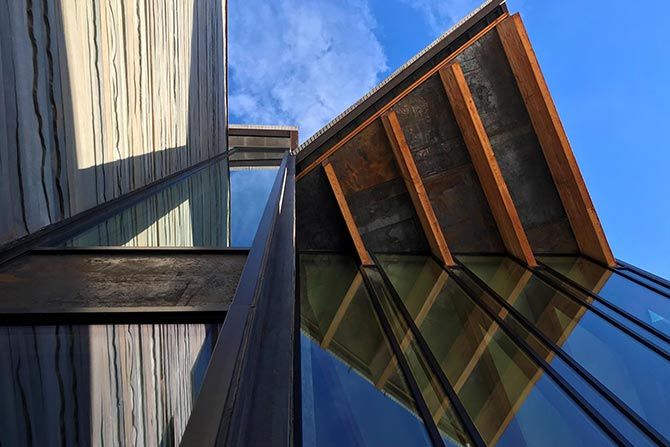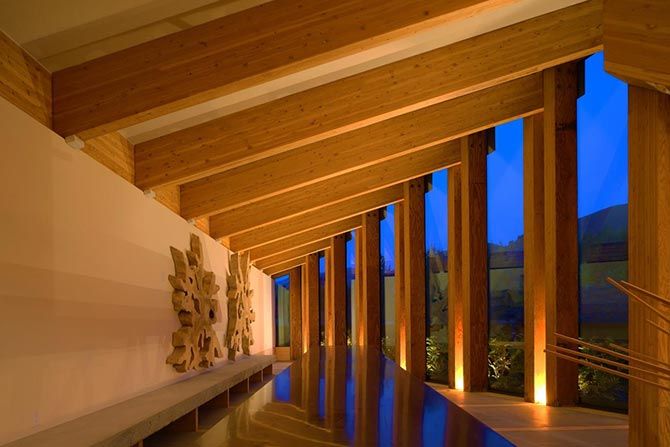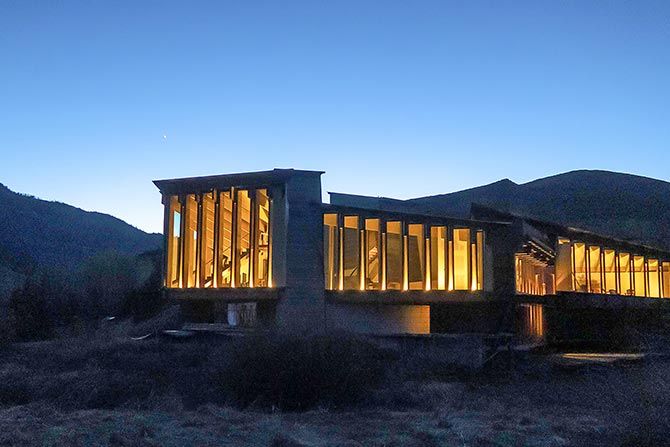Project By: Architect Susan Desko, AIA
Lot size: 0.76 acres
Building size: 6,000 sq. ft.
Location: Ketchum, ID
Design Team
Susan Desko, AIA / Principal-in-Charge
Mike Allaire
Daniel Carr
Daniel Hollis
Nikul Shah
Caleb Spangenberger
Eric Thiel
Consultants
Galena Engineering / Civil
Sawtooth Environmental Consultants / Environmental
Steve Butler Associates / Geotech
Entuitive / Façade
ME Engineers / MEP
Desimone Engineering/Entuitive / Structural
Site Characteristics
The seasonal creek “Lake Creek” runs through the site with riparian setbacks. The 200-year flood line defines the building footprint, however, the building extent is cantilevered beyond — and in most cases, double-cantilevers. The “Flag Lot” driveway is accessed by a “cross access” agreement with the neighboring parcel.
Program
The single-family residence is distributed across two levels totaling 6,000 square feet. The upper level accommodates views with ceiling heights varying from 9-30ft and 9-12ft at the lower level. Both levels are connected with double-height spaces, mezzanines and overlooks that connect to outdoor living spaces. Room uses and activities are defined by seasons, time of day and, in most cases, by weather conditions instead of predetermined functions.
Design Inspiration
Inspired by direct observation of wildlife emerging and retreating from adjacent groves of aspen, the glazing system was designed to appear invisible. The entire glazing assembly is attached to the exterior face of the paired structural micro-lam posts to not only camouflage the glazing system, but to further mimic the grove of trees. To be clear, pun intended, no mullions are visible from within the interior; all glazing caps are below the floor line or behind the wood posts and headers. In most cases, the glulam roof beams and overhangs project past the glass enclosure to extend shelter beyond the physical enclosure. At one location, the roof beams are captured inside the glass.
Structural
Clear span was necessary to maintain uninterrupted sightlines and spatial connection with the landscape beyond the enclosure. The columns/posts were doubled up in order to reinforce the sense of enclosure and develop a rhythm to the façade.
Stone Veneer
The raw material came as large cross-section cleaved material with a uniform patinated surface from desert exposure. The stone was further fabricated on-site to create more texture, varied surface color and thinner profile for veneer use.












